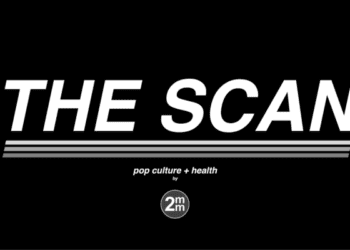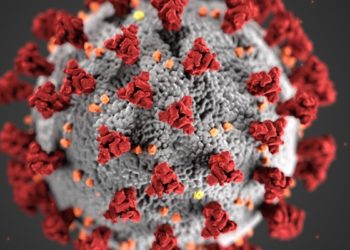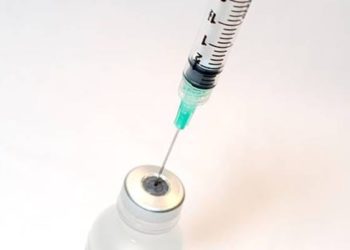2 Minute Medicine Rewind March 30, 2020
Aerosol and Surface Stability of SARS-CoV-2 as Compared with SARS-CoV-1
1. SARS-CoV-2 appears to have the longest surface viability on plastic and stainless steel compared to in aerosol, copper, or cardboard with detection of viable virus up to 72 hours post application on plastic.
2. Stability of SARS-CoV-2 appears to similar to that of SARS-COV-1.
Evidence Rating: 5 (Poor) – Correspondence / Bench Data
As the COVID-19 pandemic continues to escalate worldwide, researchers are seeking to better characterize the virus in a race to contain its spread. While the stability of SARS-COV-1, a closely related human coronavirus responsible for the SARS epidemic in the early 2000s has been well characterized, the stability of SARS-CoV-2, the virus the causes COVID-19, in aerosols and on various surfaces is currently unknown. In this correspondence, researchers discuss their data from 10 experimental conditions that tested the viability and stability of SARS-COV-2 and SARS-COV-1 in 5 environmental conditions (aerosols, plastic, stainless steel, copper, and cardboard). The virus was most viable on plastic and steel, with half lives of 6.8 and 5.6 hours, respectively. Viable virus was found up to 72 hours post application on plastic and up to 48 hours on steel. A shorter half-life was recorded for cardboard and copper, measuring in at 3.6 and 0.8 hours, respectively. No viable viruses were detected 24 hours post application on cardboard and 4 hours post application on copper. In aerosol, SARS-CoV-2 remained viable up to 3 hours post application and had a half-life of roughly 1.1 hours. Despite these findings being published preliminarily in a correspondence, the data provides valuable insight into the stability of SARS-CoV-2 and re-emphasizes the importance of proper anti-infective practices as the virus can remain viable on surfaces for days and in the air for hours. Researchers also found that the stability of SARS-CoV-2 were very similar to that of SARS-COV-1, and postulated that differences in transmission dynamics were therefore likely due to other factors such higher viral load in the upper respiratory tract and a long asymptomatic period.
Clinical Characteristics of Coronavirus Disease 2019 in China
1. Clinical data from early cases in China describe rapid transmission and variable degrees of illness.
2. Patients commonly presented with fever and cough following a median incubation period of 4 days though many patients presented without fever and had normal radiologic findings.
Evidence Rating: 3 (Average)
Clinical data from early cases of COVID-19 are a valuable source of information to characterize the clinical course of infected individuals and can be used to guide current clinical decision making as the pandemic continues to develop. The present study analyzed medical records for hospitalized patients between December 11, 2019 to January 31, 2020 to identify common characteristics of infected and treated patients. A total of 1099 patients treated across 552 hospitals in 30 provinces in China with laboratory-confirmed SARS-CoV-2 infection were included in the study. Similar to previous literature, demographic data conveyed higher rates of infection in males (58.1%) versus females, and a tendency for older patients to be affected as the median age was 47 years. The median incubation period was 4 days for affected patients. The most common symptom at presentation was cough (67.8%) with fever being less common (43.8%), though majority of patients developed a fever during their hospital stay (88.7%). Fatigue (38.1%), sputum production (33.7%), shortness of breath (18.7%), sore throat (13.9%), chills (11.5%), headache (13.6%), and myalgia or arthralgia (14.9%) were commonly reported but only present in a minority of patients. Other symptoms such as gastrointestinal symptoms were relatively uncommon (<5%). On admission, patients designated as having severe disease tended to be older than those diagnosed with nonsevere disease by a median of 7 years. Majority of patients had underwent chest CT, with ground-glass opacity (56.4%) and bilateral patchy shadowing (51.8%) being the most common radiographic patterns. However, many patients with nonsevere disease presented with no abnormality on CT (17.9%). Of the patients identified, 5% were admitted to ICU, 2.3% required invasive mechanical ventilation, and 1.4% died. Median hospitalization duration was 12 days.
1. Study findings suggest that risk factors predisposing patients to progression to acute respiratory distress syndrome (ARDS) include older age, neutrophilia, and organ and coagulation dysfunction.
2. Some factors, including high fever, were associated with higher rates of ARDS development but lower rates of mortality.
3. In this observational study with small sample size and potential selection bias, methylprednisolone treatment may have been associated with lower mortality rates patients in COVID-19 patients with ARDS.
Evidence Rating: 3 (Average)
Development of hypoxemia and progression to acute respiratory distress syndrome (ARDS) is a mechanism is a cause of morbidity and mortality in COVID-19 patients. In this retrospective cohort study, the data of 201 patients aged 21 to 83 with confirmed COVID-19 pneumonia hospitalized in Wuhan China was analyzed to delineate risk factors associated with development of ARDS and progression from ARDS to death. Eighty-four patients (41.8%) developed ARDS and 44 of these patients (52.4%) died. Patients who developed ARDS were more likely to present with dyspnea (59.5% versus 25.6%) and pre-existing comorbidities such as hypertension (27.4% versus 13.7%), diabetes (19.0% versus 5.1%) versus patients that did not develop ARDS. Risk factors identified as being associated with development of ARDS and progression from ARDS to death include age over 65 years (hazard ratio [HR], 3.26, 6.17, respectively), neutrophilia (HR 1.14, 1.08, respectively), elevated end-organ related and coagulation indices, with LDH and D-dimer specifically being mentioned. High fever of over 39°C was associated with higher likelihood of ARDS development (HR, 1.77) but lower likelihood of death (HR, 0.41) and overall associated with better outcomes. Likewise, several other factors such as pre-existing comorbidities, lymphocyte counts, glucose, creatinine, and other markers, were associated with the development of ARDS but not progression from ARDS to death, indicating the possibility for different pathophysiological mechanisms underlying the outcomes. Finally, although this was not the primary focus for the investigation, it was found that patients with ARDS who received methylprednisolone treatment had lower rates of mortality that those who did not (46% versus 61.8%). This study findings provide important information regarding factors linked with ARDS in COVID-19 patients, and direction for further investigation into treatment regimens.
Radiological findings from 81 patients with COVID-19 pneumonia in Wuhan, China: a descriptive study
1. COVID-19 pneumonia findings on chest computed tomography (CT) are present even in asymptomatic patients.
2. The pattern of findings appear to progress from focal unilateral to diffuse bilateral ground-glass opacities with or without consolidations within 1 to 3 weeks of infection.
Evidence Rating: 2 (Good)
Although chest CT imaging is one of the most commonly used imaging modalities to diagnose and prognosticate COVID-19 pneumonia, the imaging features and evolution overtime have not been well characterized. In this retrospective cohort study, the imaging and clinical data of 81 patients was used as a means to correlate imaging findings with the clinical course of COVID-19 pneumonia. Patients were categorized as either group 1 (subclinical, scans done before symptom onset), 2 (scans <1 week after symptom onset), 3 (scans done between 1 to 2 weeks of onset), and 4 (>2 weeks to 3 weeks). The predominant manifestation of the disease appeared to be bilateral, subpleural, ground-glass opacities with air bronchograms with a slight predominance in the right lower lobe. For the subclinical group, the predominant radiological finding was ground glass opacities (93%), presenting with unilateral (60%) and multifocal (53%) lesions. The most common finding in the second group was an evolution to bilateral (90%), diffuse (52%) ground glass opacities (81%). Pleural effusions (5%) and lymphadenopathy (14%) were also detected in this group. Prevalence of ground glass opacities decreased in the 3rd (57%) and 4th group (33%) in favour of consolidation (40%, 53%, respectively). Some scans during progression from the second to third week also demonstrated interstitial changes associated with bronchiectasis and/or interlobular or septal thickening, suggesting the development of fibrosis. Researchers suggested serial imaging with CT as a useful tool in monitoring disease progression or regression, as radiographic improvement was well correlated with clinical improvement and discharge. Likewise, radiographic deterioration despite therapy was associated with poor prognoses and death. In accordance with prior and emerging literature, this patient population tended to involve patients of older age and underlying comorbidities. Although the sample size of this study was small, it provides valuable insight into the radiographic progression of COVID-19 pneumonia on CT, and may assist in further diagnosis, prognostication, and monitoring in the clinical setting.
1. Hydroxychloroquine treatment was found to significantly reduce viral load in COVID-19 patients, and had an enhanced effect when azithromycin was included in treatment
Evidence Rating: 4 (below average)
Despite significant research efforts, there currently exists no approved pharmacolgic therapy for the direct treatment of COVID-19 to reduce viral load. Significant effort has been placed on the repositioning of old drugs for treatment of COVID-19 as they have known safety profiles, side effects, and interactions. Chloroquine, an old antimalarial drug, has been one drug evaluated for this purpose as prior literature has demonstrated anti-SARS-CoV activity in vitro and ability to reduce viral load in an early clinical trial. To expand upon study findings, researchers conducted an open-label non-randomized clinical trial enrolling 42 hospitalized patients with laboratory confirmed COVID-19. Twenty-six patients were assigned to receive 200mg of hydroxychloroquine, a safer analogue of chloroquine, three times daily for ten days, 6 of whom additionally received azithromycin (500mg on day 1 followed by 250mg daily for 4 the next days). At day 6 post inclusion, nasopharyngeal samples demonstrated that 100% of the combinational therapy group had virological clearance, compared to 57.1% in the hydroxychloroquine only group, and 12.5% in the controls. Hydroxychloroquine therapy (with azithromycin or alone) was found to be significantly associated with greater viral load reduction when compared to controls (p=0.001), and combinational therapy with azithromycin was found to be significantly more effective than hydroxychloroquine alone (p<0.001). Despite a small sample size and relative short follow-up, study findings are promising in demonstrating that hydroxychloroquine with azithromycin may be used as a therapeutic option for hospitalized COVID-19 patients. Additional study is required to assess correlation to clinical outcomes as well as safety and efficacy across a larger sample size.
Image: PD
©2020 2 Minute Medicine, Inc. All rights reserved. No works may be reproduced without expressed written consent from 2 Minute Medicine, Inc. Inquire about licensing here. No article should be construed as medical advice and is not intended as such by the authors or by 2 Minute Medicine, Inc.









